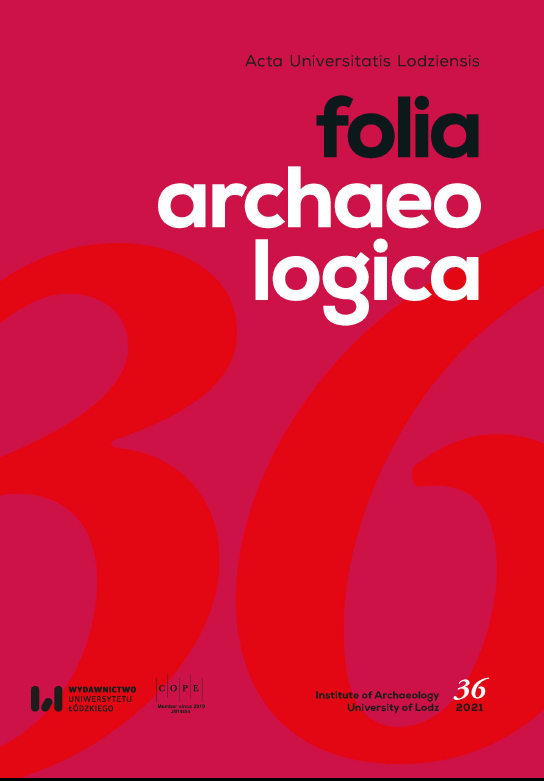Militarne wizerunki przypisywane św. Jerzemu-smokobójcy i ich mitologiczno-religijne konotacje (na przykładzie wczesnośredniowiecznych zawieszek z Europy Środkowo-Wschodniej)
Military Images Attributed to St. George the Dragon-slayer and their Mythological and Religious Connotations (on the Example of Early Medieval Pendants from Central and Eastern Europe)
Author(s): Tomasz KurasińskiSubject(s): History, Archaeology, Military history, Middle Ages
Published by: Wydawnictwo Uniwersytetu Łódzkiego
Keywords: early Middle Ages; pole arms; St Georg the dragon-slayer; grave goods; pendants with a warrior saints; snake-dragon theme
Summary/Abstract: This article is an attempt to interpret the iconographic and semantic content encoded in disc pendants with equestrian images attributed to St George fighting the snakedragon. They are known mainly from the northern and north-eastern Rus’ lands (end of the 11th – mid 13th century), as well as Poland (mid-12th – first half of the 13th century) and Latvia (end of the 12th–14th centuries). They were created in accordance with the canons of Christian iconography, to show both God’s power and the power of the saint. At the same time, their content reaches deeper layers of meaning, related to the representation of the cosmic duel between the primal forces identified with chaos and destruction and striving to introduce a social and civilization order. The iconographic program shown on these subjects can be read as a Christianized visualization and update of the motif which is a mythical representation of God’s confrontation with evil. The archetypal meaning of the struggle of opposing forces is contained in the painting of St George triumphing over evil and darkness. In the drakomachia scene depicted on the pendants, the weapon directed at the reptilian figure under the horse’s hooves is a spear. Therefore, it is a spearhead directed at the negatively valorized zone. In line with the spatial valorization of the world, the “bottom” opposed to the “top” was associated with the presence of chthonic forces.The religious-symbolic and mythological meaning of the content presented on the pendants in question indicates their syncretic character. These objects, as devotional items, could be a testimony to the ongoing processes of Christianization and the acceptance of the new faith, but also – despite their general compliance with the canons of Christian iconography – serve as a traditionally understood protective measure against the forces of evil, i.e. an amulet. One, moreover, did not have to contradict the other, and the willingness to manifest one’s status must also be taken into account. The funerary context indicates that the pendants were used by women in this dual role. Due to the military-religious significance, their addressees and recipients could also be warriors, although in this case we can only guess that.
Journal: Acta Universitatis Lodziensis. Folia Archaeologica
- Issue Year: 2021
- Issue No: 36
- Page Range: 83-111
- Page Count: 29
- Language: Polish

